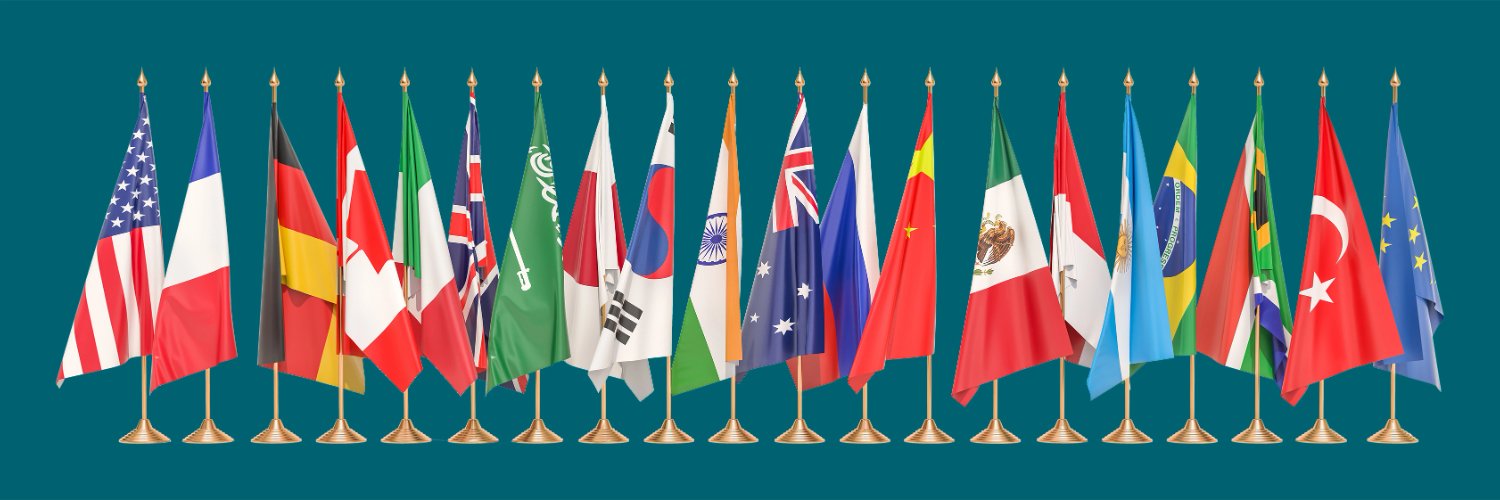
Foreign Policy Analysis (FPA) Journal
@FPA_Jrnl
Foreign Policy Analysis - An International Studies Association (ISA) Journal Editors-in-Chief: Brian Lai & Lisbeth Aggestam http://bit.ly/FPAyoutube
Gloria (2025) shows that Duterte's foreign policy pivot toward China and away from the U.S. was shaped by a populist discourse of national victimhood, framing the Philippines as historically wronged and insecure in a shifting global order. academic.oup.com/fpa/article-ab…

Oestman and Passmore (2024) show that while leadership change often disrupts peacekeeping contributions, democracies maintain more consistent commitments due to institutional constraints and overlapping domestic preferences. academic.oup.com/fpa/article/20…

Flowers (2025) introduces the HEX dataset to analyze global espionage exposures, revealing that most accused spies were state personnel motivated by money across 483 cases from 1946 to 2010. academic.oup.com/fpa/article-ab…
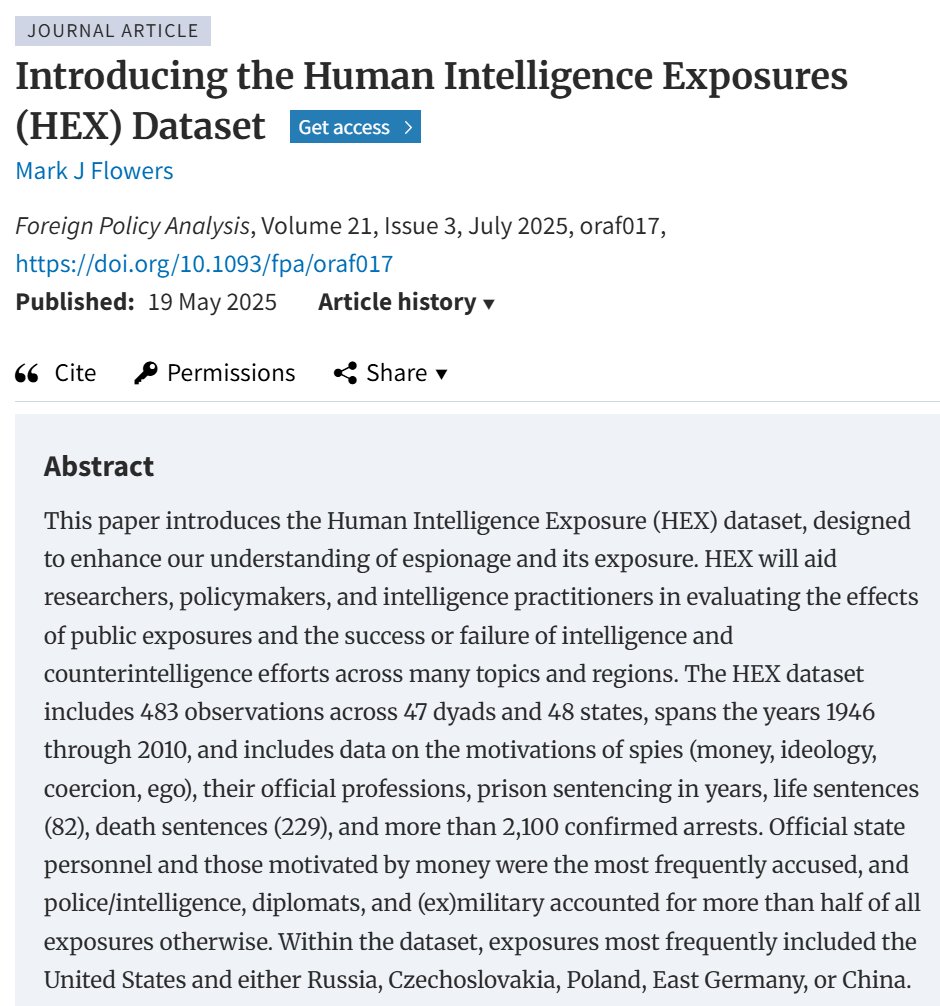
Fracalossi de Moraes (2025) shows that perceived adjustment costs were key, APMs were seen as low-cost to abandon, while cluster munitions posed significant material burdens. academic.oup.com/fpa/article/21…

LaSpisa and Mitchell (2025) find that democratic dyads are more prone to maritime conflict due to stronger domestic interests, executive constraints, and weaker territorial norms at sea. academic.oup.com/fpa/article/21…

🚨NEW ARTICLE🚨 Zvobgo and Simmons (2025) show that most Americans still support ICC war crimes investigations, even when U.S. personnel are targeted, though national interest arguments can dampen this support. academic.oup.com/fpa/article/21…
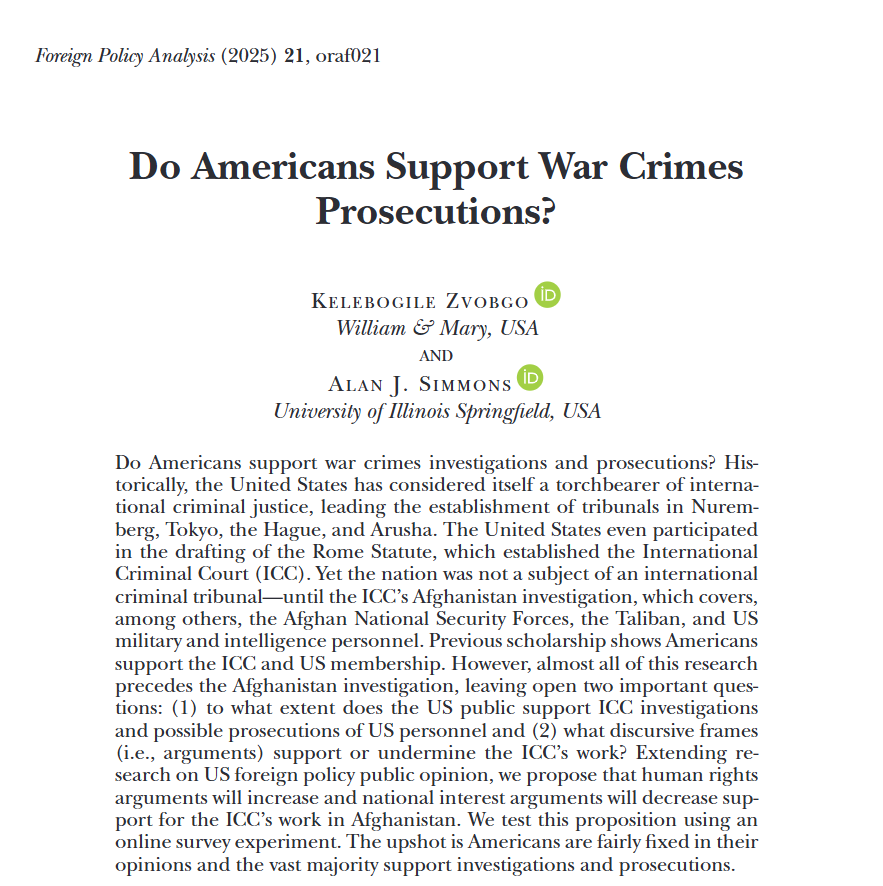
🚨NEW ARTICLE🚨 Attia (2025) shows that U.S. presidents with strong party support and high approval are more likely to lift sanctions, while congressional oversight makes termination less likely and slower. academic.oup.com/fpa/article/21…

Cadier (2024) shows that populist governments politicize foreign policy by opposing predecessors and using external affairs to advance domestic battles, as illustrated by Poland’s case. academic.oup.com/fpa/article/20…
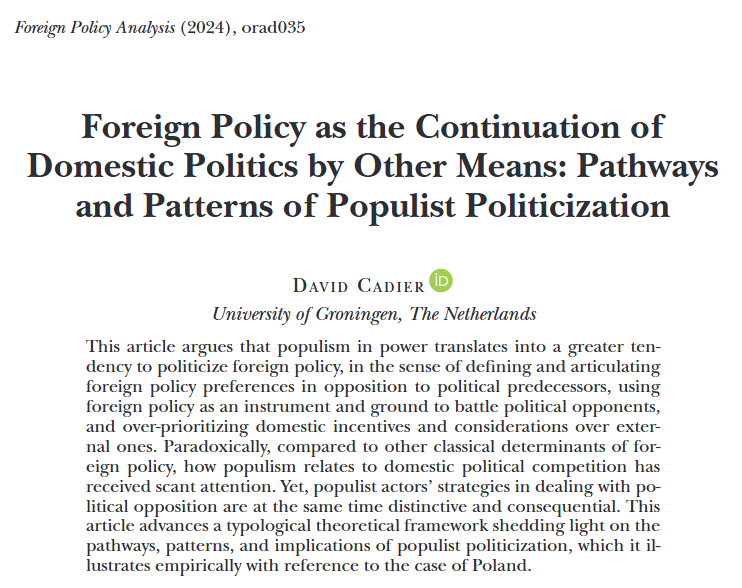
🚨NEW ARTICLE🚨 In his new article, @jamesd_kim examines how US presidential visits impact allies' military spending. He finds visits lead to lower defense budgets, especially in the early years of a presidency academic.oup.com/fpa/article-ab…
Thiers (2024) shows that Evo Morales’s shifting emotions toward Chile help explain why Bolivia’s foreign policy oscillated between cooperation and escalation in their long-standing rivalry. academic.oup.com/fpa/article/20…

Abbasov and Thies (2023) show that in Armenia, Azerbaijan, and Georgia, individuals with stronger pro-democracy attitudes are more likely to support a pro-Western foreign policy over alignment with Russia. academic.oup.com/fpa/article-ab…
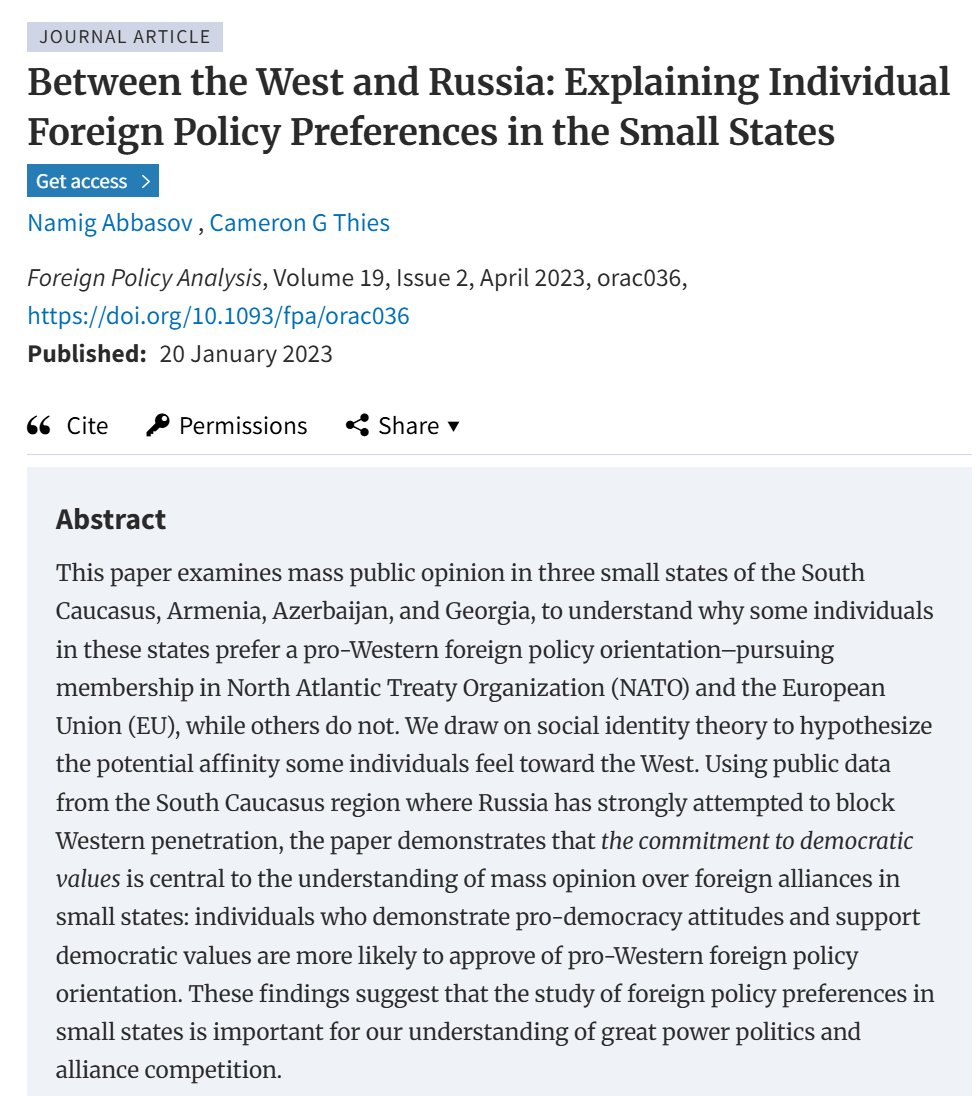
How does the lack of intersectionality limit international religious freedom policies? academic.oup.com/fpa/article/21…

Cadier (2024) argues that populist governments politicize foreign policy by opposing predecessors, instrumentalizing diplomacy for domestic battles, and prioritizing internal political incentives over external strategic logic. academic.oup.com/fpa/article/20…

How do publics respond to coercive vs. persuasive foreign messaging? Davies, Edney, and Williams (2025) find that even mild persuasive messages from China on UK nuclear investment backfired—security threat perceptions consistently fueled public resistance. academic.oup.com/fpa/article/21…

Dörfler (2025) argues that Russia’s invasion of Ukraine was driven by groupthink and loss-framed risk amplification among Putin’s inner circle, consistent with prospect theory. academic.oup.com/fpa/article/21…

🚨 New article🚨 Fracalossi de Moraes (2025) shows Brazil banned anti-personnel mines but not cluster munitions due to lower perceived military and economic adjustment costs. academic.oup.com/fpa/article/21…

🚨 New article📷 When do firms stay in sanctioned states during wartime? Phạm (2025) shows that firms with high economic vulnerability, especially in extractive sectors or with major assets, are less likely to exit Russia after sanctions. academic.oup.com/fpa/article/21…

🚨 New article🚨 Fritzler, Grøn, and Wivel (2025) show that these states shape international norms through processual leadership, especially by enabling deliberative spaces around the R2P. academic.oup.com/fpa/article/21…

🚨 New article 🚨 What role does the current level of nuclear latency play in U.S. influence over allies’ capabilities? Yang (2025) finds that initial U.S. backing helps build capacity, but becomes a constraint once a protégé nears weapons-ready status. academic.oup.com/fpa/article/21…

Vignoli and Baraldi (2024) show that left-wing governments secure higher parliamentary backing, and that inclusive, humanitarian missions face less opposition than strategic ones. academic.oup.com/fpa/article/20…
